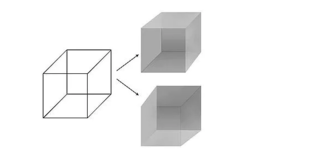While Conversational Intelligence (C-IQ) is traditionally a methodology, its roots lie in mythology. The late Judith E. Glaser, anthropologist and founder of C-IQ (and long-time author of this blog), first introduced me to the topic of mythology through oral tradition. Her tales of Greek and Roman Philosophy would paint a picture of the themes of life. The most common themes found in mythology (love, heroism, fate, faith, etc.) serve as benchmarks for our own actions, providing a blueprint for us to follow. However, modern myths tend to follow a different blueprint, often making claims to knowledge of a “truth” beyond all others.
Up until the last century, the myth “You cannot teach an old dog new tricks” was applied to human development. However, in the 1960s, neuroscientist Joseph Altman discovered and demonstrated neurogenesis (or the growth of new brain cells) in the hippocampus of mature cats, rats, and guinea pigs; suggesting that adult brains can generate new cells and new synaptic connections (i.e. learning).
Although initially rejected, this research was revived in the late 90s by CreatingWE Scientific Board Advisor Bruce McEwen and colleague Elizabeth Gould at Rockefeller University in New York. The team recreated the cellular phenomena Altman discovered in the hippocampus of a shrew, which suggested that it may be a common trait among most mammals.1
Since then researchers from the Division of Molecular Imaging and Neuropathology at Columbia University have confirmed the sustained effect in adult humans as well.2
A myth like “You cannot teach an old dog new tricks” may seem intuitive, but it underestimates the complexities of experience. As research has shown, the adult brain is still capable of generating new cells throughout life. Here are a few common myths of the mind….
…#7. The Necker Cube:

Source: Koch, The Quest for ConsciousnessThe Necker Cube is an ambiguous drawing that can be perceived in one of two ways: a) the cube is seen as front on, as if you were looking into a room or b) the cube is seen from a bird’s eye view.
This optical illusion is known as a bistable perception because a subject can only perceive one visual pattern at a time. You cannot see both cubes at once, you toggle between each percept. This illusion shows how the visual cortex is involved in processing information that leads to our conscious perceptions.
What is even more interesting is the how blind people “map” the three dimensional world. According to Harold Burton, Professor of Neuroscience at the Washington University School of Medicine, when a blind person is “reading” braille, the sensory information travels to and is processed in the visual cortex. Much like the mirror box, this counter-intuitive finding also shows how the cortex can re-organize function in the face of sensory deprivation.7